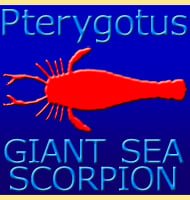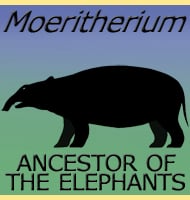In Depth
As dedicated eaters of shellfish, the placodonts had no need to grow big and were soon outsized by other marine reptiles such as the nothosaurs. As such placodonts like Cyamodus developed turtle-like shells to try and make themselves too tough for other marine reptiles to eat. Cyamodus itself had two shells, the first and largest covering the main body while having a smaller one to the rear that protected the pelvis. Although the shells would have been too cumbersome for high agility swimming, Cyamodus would still likely have been more agile than other single shelled placodonts like Henodus. The shells were also covered in hexagonal plates that not only increased the level of protection but also increased their weight. This was a typical placodont adaptation as a higher weight just beyond the level of neutral buoyancy allowing them to more easily reach bottom where the shellfish were.
Further adaptations for protection are the strongly built rear of the skull as well as the limbs that that do not protrude too far from the extent of the shell. However the reduced limbs mean that Cyamodus could only paddle itself through the water and this is where the heavy shell and internal bones really helped Cyamodus in getting to the bottom. Cyamodus also would have been very cumbersome when on the land and probably only ventured out of the water for egg laying and possibly periods of rest. Despite these developments however, juvenile Cyamodus were still vulnerable to predation, evidence for which has been found with the presence of two Cyamodus juveniles inside the stomach area of a Lariosaurus fossil.
A placodont similar to Cyamodus was the much larger Psephoderma.
Further Reading
– A skull of Cyamodus kuhnschnyderi Nosotti & Pinna 1993, from the Muschelkalk of Wassonne (Alsace, France). – Palaeontologische Zeitschrift 73(3/4):377-383. – O. Rieppel & H. Hagdorn – 1999. – The shallow marine placodont Cyamodus of the central European Germanic Basin: its evolution, paleobiogeography and paleoecology. – Historical Biology: An International Journal of Paleobiology. 24.3 (4): 1–19. – Cajus G. Diedrich – 2011. – A new species of Cyamodus (Placodontia, Sauropterygia) from the early Late Triassic of south-west China. – Journal of Systematic Palaeontology. Online edition (17): 1237–1256. – Wei Wang, Chun Li, Torsten M. Scheyer & Lijun Zhao – 2019.









